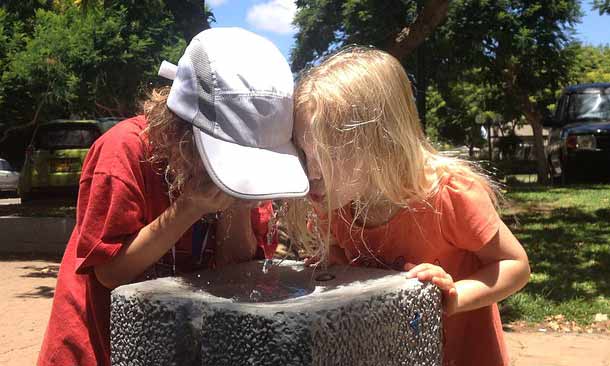Learn the dangers of dehydration. Check out the article we found over at Herbs-info.
Water is essential to life and makes up a large part of us. Babies have the most water, being about 78% water at birth. By one year of age, the amount has dropped to about 65%. By adulthood, the amount of water in the body has dropped to around 60 percent for men and slightly less for women. With that in mind, dehydration or water loss, affects humans – and other living organisms – greatly.
Recognizing Dehydration
Fluid loss from the body never stops – through urination, defecation, and other “insensible” losses through perspiration (this occurs whether you are noticeably sweating or not) and respiration (yes, we also lose water every time we breathe out!) – and it’s therefore essential to make sure our fluid intake is sufficient to cover for all fluid loss.
When the overall balance between water intake and loss favors water loss, a person becomes dehydrated. Dehydration disturbs the body’s normal metabolic processes because it changes the concentration of electrolytes in the body. The body’s functionality is diminished, as is the ability to remove toxins. These changes give rise to the different short-term signs and symptoms experienced by a person who is dehydrated:
• Dry mouth and skin
• Thirst
• Headache
• Athletic performance (can decrease by 20–30% if you lose as little as 4% of your water through sports/exercise!)Dehydration is also considered a potential factor in numerous long term health conditions – including for example the formation of kidney stones.
Dehydration In Infants
Recognizing dehydration in infants and toddlers is harder so take note if they don’t have tears when they cry or haven’t had a wet diaper in three hours, are constantly sleeping, and have poor skin turgor (lightly pinch the skin over their abdomen and watch if it immediately returns to normal). The soft spots (called fontanelles) in an infant’s head also “sink” if they are dehydrated. These signs can indicate moderate to severe dehydration.
Who Easily Gets Dehydrated
Like other illnesses and health conditions, some members of the popular are more susceptible to dehydration than others:
• Children – infants and toddlers more so than school-age children
• Older adults
• Chronically-ill people
• People who live in high altitudes – when you live in a higher area, your body tries to adjust to the pressure by increasing your rate of breathing and urinationPreventing Dehydration
The best tip to keep hydrated is to drink at least eight glasses of fluid – ideally water or an isotonicbeverage – daily! Coconut water is great – but watch for added ingredients. You can even include “water-filled” foods in your diet to help battle dehydration!
• Watermelons
• Cucumber
• Celery
• Grapefruit, oranges and other citrus fruit
• Radish
• Tomatoes
Next Article: Learn Why Dehydration Makes You Sick and Fat
Read full article: 7 Scary Things That Dehydration Does To Your Body – Plus 10 Super-Hydrating Foods For Rapid Recovery







Mother Nature Approved
Oct 12. 2017
Anything related to natural products is so important
Oil Supplements
Oct 12. 2017
Quite curious. :/